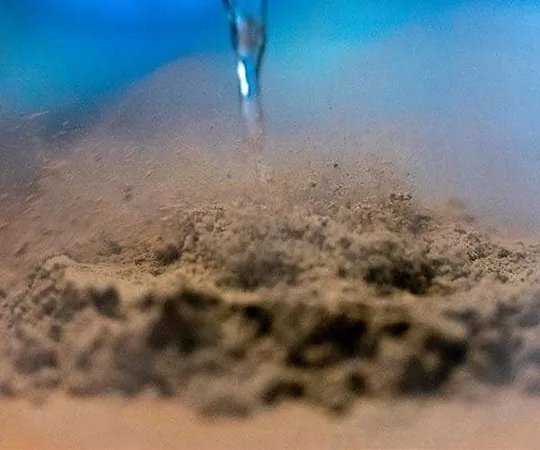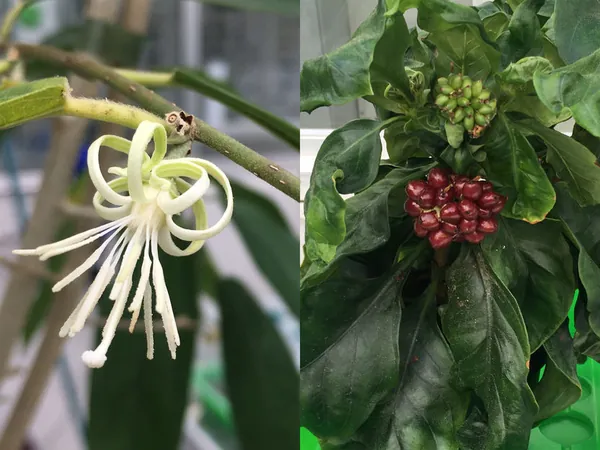
NASA’s Advanced Lunar Dust Mitigation: Gateway’s Key to Successful Moon Missions
2025-01-23
Author: John Tan
Introduction
NASA's ambitious Artemis program aims to catapult humanity back to the Moon, establish a long-term presence, and ultimately stretch the boundaries of human exploration to Mars. As part of this monumental initiative, engineers are confronting one of the Moon's most formidable adversaries: lunar dust. This abrasive, adhesive substance presents unique challenges that threaten both astronaut safety and equipment functionality.
Lunar Dust Challenges
Lunar dust isn't a new issue; it was first noted during the Apollo missions, which experienced limited exposure compared to what future missions will face. Future astronauts will be on the Moon's surface for extended periods, especially as they travel to and from the lunar space station, Gateway. This poses significant risks, as each lunar landing brings about potential dust contamination, jeopardizing scientific instruments, solar panels, and critical systems designed for sustainable operations.
Research Initiatives
In an effort to understand the complexities of lunar dust, Josh Litofsky, the principal investigator for NASA's Gateway lunar dust adhesion testing campaign based at the Johnson Space Center, leads groundbreaking research. He points out that lunar dust particles are irregular in shape due to billions of years of micrometeoroid impacts, making them particularly troublesome. 'These particles are jagged, sticky from chemical and electrical forces, and minuscule in size,' Litofsky explained. 'Even trace amounts can considerably impede equipment performance.'
GOLDMAP Program
At the forefront of this research is the Gateway On-orbit Lunar Dust Modeling and Analysis Program (GOLDMAP), a predictive framework designed by Ronald Lee, also from Johnson Space Center. GOLDMAP takes into account a multitude of factors, including Gateway's architecture, material properties, and the specific conditions of lunar orbit. Its goal is to simulate how lunar dust behaves and accumulates on Gateway's surface.
Preliminary Findings
Preliminary findings from GOLDMAP's simulations are revealing. They suggest that lunar dust can form localized 'clouds' around Gateway, with larger particles likely to cling to unprotected surfaces. This knowledge is vital for developing effective strategies to prevent contamination and ensure the integrity of the Gateway.
Broader Implications
The implications of this research extend beyond the Lunar Gateway project. The data and insights gained will play a pivotal role in enhancing Gateway's resilience, ensuring its functionality throughout its mission duration. More importantly, the strategies developed for managing the harsh lunar environment will provide invaluable knowledge for NASA and its international partners as they gear up for missions further into the solar system.
Conclusion
Stay tuned! The lessons learned from lunar dust management on Gateway will be instrumental in shaping the future of human space exploration. Will NASA overcome this dusty dilemma and successfully navigate toward Mars? Only time will tell!


 Brasil (PT)
Brasil (PT)
 Canada (EN)
Canada (EN)
 Chile (ES)
Chile (ES)
 Česko (CS)
Česko (CS)
 대한민국 (KO)
대한민국 (KO)
 España (ES)
España (ES)
 France (FR)
France (FR)
 Hong Kong (EN)
Hong Kong (EN)
 Italia (IT)
Italia (IT)
 日本 (JA)
日本 (JA)
 Magyarország (HU)
Magyarország (HU)
 Norge (NO)
Norge (NO)
 Polska (PL)
Polska (PL)
 Schweiz (DE)
Schweiz (DE)
 Singapore (EN)
Singapore (EN)
 Sverige (SV)
Sverige (SV)
 Suomi (FI)
Suomi (FI)
 Türkiye (TR)
Türkiye (TR)
 الإمارات العربية المتحدة (AR)
الإمارات العربية المتحدة (AR)